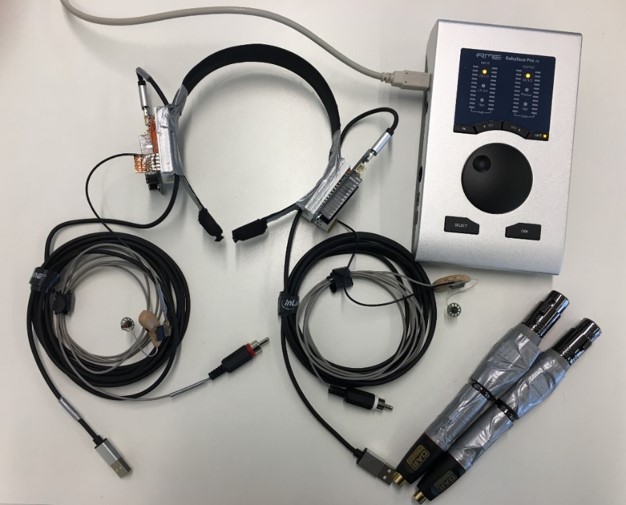Human Head Yaw Estimation Based on Two 3-Axis Accelerometers
The estimation of the orientation of an object, and a human head in particular, can be defined by the Euler angles: the yaw, pitch and roll. The robust and drift-free estimation of those angles is usually achieved with the data from several sensors such as accelerometers, gyroscopes and magnetometers, processed with sensor fusion algorithms. However, wearable devices such as hearing instruments are rarely equipped with all those sensors, and might usually only have a single accelerometer embedded per device. While it is possible to retrieve a correct estimation of the roll and pitch using only a single accelerometer, estimating the yaw is a more challenging task as accelerations around the gravity vector cannot be detected by an accelerometer. In the context of binaural communication devices and spatial hearing, the yaw of the head is a key information that helps achieving dynamic binaural synthesis. This work proposes an algorithm that aims at estimating the yaw of a human head by using only two 3-axis accelerometers that are placed at each side of the head. The algorithm is evaluated with acceleration measurements of human subjects achieving a realistic task. The results suggest that the strategy used is promising as a good performance can be achieved for a majority of the measures as long as an individualized set of parameters can be selected. The results also suggest that the performance of the current implementation is sensitive to sensor displacement after calibration or a wrong estimation during initialization.
Publication ➔
The estimation of the orientation of an object, and a human head in particular, can be defined by the Euler angles: the yaw, pitch and roll. The robust and drift-free estimation of those angles is usually achieved with the data from several sensors such as accelerometers, gyroscopes and magnetometers, processed with sensor fusion algorithms. However, wearable devices such as hearing instruments are rarely equipped with all those sensors, and might usually only have a single accelerometer embedded per device. While it is possible to retrieve a correct estimation of the roll and pitch using only a single accelerometer, estimating the yaw is a more challenging task as accelerations around the gravity vector cannot be detected by an accelerometer. In the context of binaural communication devices and spatial hearing, the yaw of the head is a key information that helps achieving dynamic binaural synthesis. This work proposes an algorithm that aims at estimating the yaw of a human head by using only two 3-axis accelerometers that are placed at each side of the head. The algorithm is evaluated with acceleration measurements of human subjects achieving a realistic task. The results suggest that the strategy used is promising as a good performance can be achieved for a majority of the measures as long as an individualized set of parameters can be selected. The results also suggest that the performance of the current implementation is sensitive to sensor displacement after calibration or a wrong estimation during initialization.
Publication ➔
